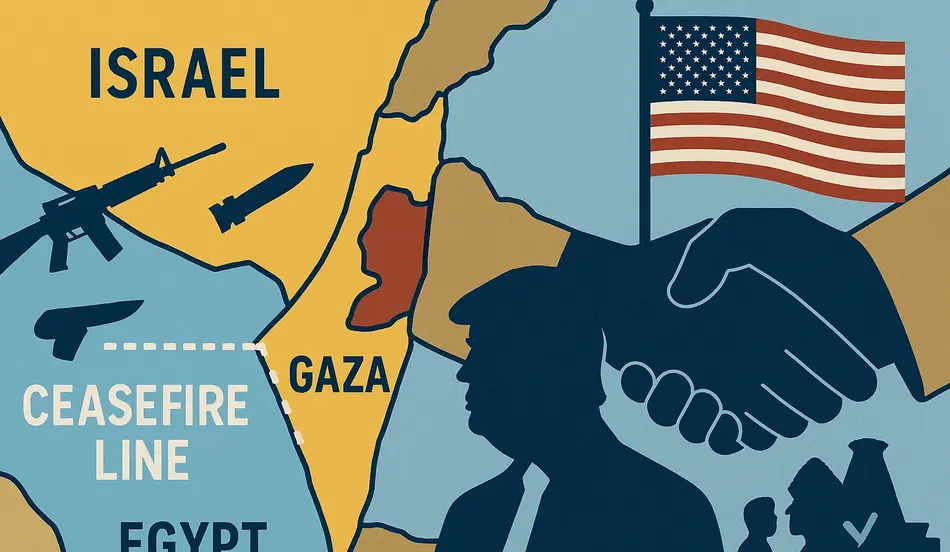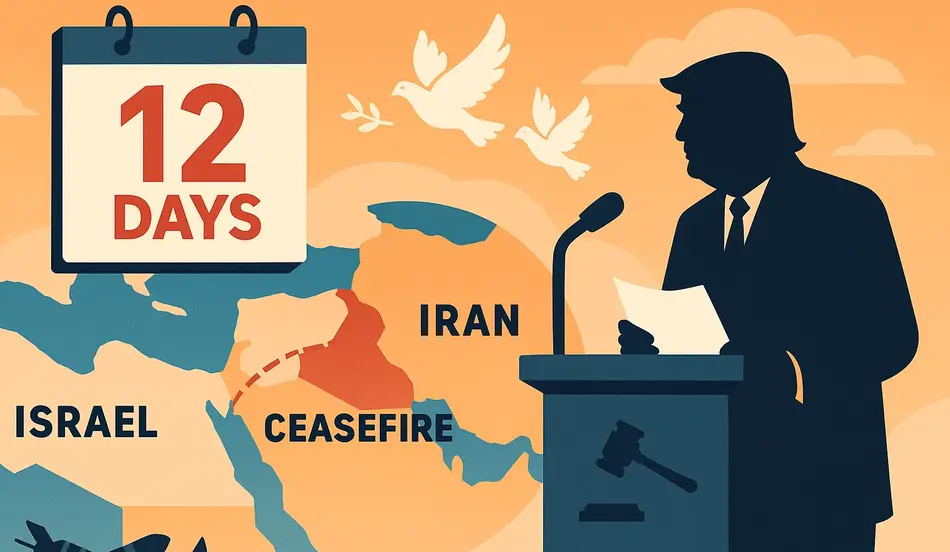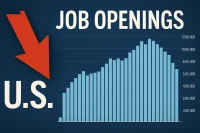In today’s rapidly evolving geopolitical landscape, Middle East ceasefire analysis has become more crucial than ever for understanding global security dynamics. The recent surprise announcement of a ceasefire between Israel and Iran, brokered by the United States, marks a significant turning point in regional tensions that have escalated dramatically since October 7th. This comprehensive Middle East ceasefire analysis explores the strategic calculations behind President Trump’s unexpected announcement, regional powers’ reactions, and the long-term implications for stability in one of the world’s most volatile regions.
The Strategic Implications of the Ceasefire
The recent developments in the Middle East represent a complex web of strategic calculations by multiple actors. This Middle East ceasefire analysis reveals how carefully choreographed moves by both Iran and the United States led to what President Trump has branded as the “12-Day War.”
Iran’s Calculated Response
According to Eurasia Group Managing Director for Asia Maksad Faraz, Iran’s response to the US strike on its nuclear facilities in Fordow was “carefully choreographed, telegraphed ahead of time from the Iranians to make sure that the U.S. then does not respond in a much more aggressive way that can threaten the stability of the regime.” This strategic restraint reflects the internal vulnerabilities of the Iranian regime, which sought to project strength while avoiding further escalation.
The Surprise Ceasefire Announcement
President Trump’s unexpected announcement of a ceasefire between Israel and Iran came as what Faraz described as “a gasp of relief for most in the region.” This Middle East ceasefire analysis suggests the timing was opportunistic, capitalizing on Iran’s apparent desire for de-escalation after demonstrating what many experts consider a position of weakness rather than strength.
Ballistic Missiles as a Sign of Weakness
“It’s rarely the case that ballistic missiles fly, and they demonstrate weakness rather than strength,” notes Faraz in his Middle East ceasefire analysis. This counterintuitive perspective highlights how Iran’s missile attacks, despite their destructive potential, actually signaled the regime’s vulnerability and opened a pathway for diplomatic resolution rather than further military confrontation.
How Regional Powers Are Navigating the Conflict
The response from Middle Eastern nations to the US-Iran-Israel conflict reveals a complex diplomatic balancing act. This section of our Middle East ceasefire analysis examines how key regional players are positioning themselves.
Strategic Silence from Gulf States
The governments of Turkey and Saudi Arabia notably stopped short of condemning US action against Iran, while Qatar and the UAE avoided mentioning the United States altogether in their statements. According to regional security experts at the Washington Institute for Near East Policy, this careful positioning reflects both strategic hedging and pragmatic diplomacy.
Balancing Regional Stability and National Interests
“These are status quo powers,” explains Faraz. “A lot of them have their national agendas, their visions of where they want to take the countries investing in their economies and developing them. They don’t want to see this conflict drag on.” This Middle East ceasefire analysis suggests that economic development priorities are increasingly shaping diplomatic responses to regional conflicts.
The Fear of Blowback
Regional powers are acutely aware of potential repercussions from taking strong positions. As our Middle East ceasefire analysis indicates, there are legitimate concerns about “Iran attacking American bases, energy facilities in Saudi Arabia, the UAE and Qatar.” This threat has prompted these nations to “play in both sides and hedge and play the role of facilitator,” creating a complex diplomatic environment where public statements and private positions may diverge significantly.
Israel’s Campaign Against Iranian Influence
The conflict between Israel and Iran has taken a decisive turn since October 7th, with significant implications for the regional power balance. This Middle East ceasefire analysis examines how Israel has systematically targeted Iran’s network of proxies.
Dismantling Iran’s Forward Defense Strategy
“Iran has been dealt a devastating blow since October 7th,” notes Faraz. “We saw Israeli Prime Minister Netanyahu systematically go after Iran’s forward defense strategy, its employment of these proxy groups throughout the region to combat Israel indirectly through Hezbollah in Lebanon, Hamas in Gaza, the Houthis in Yemen, militias in Iraq.”
The Quiet Welcome from Unexpected Quarters
According to NBC News reporting, “Israel’s highly destructive dismantling of Iranian influence in Lebanon was quietly welcomed by those outside the group’s base of Shiite supporters, even as Lebanese leaders continued to publicly oppose Israel and champion the Palestinian cause.” This dichotomy between public rhetoric and private sentiment reveals the complex attitudes toward Iranian influence in the region.

Netanyahu’s Strategic Calculations
Our Middle East ceasefire analysis suggests that Israeli Prime Minister Netanyahu faces a critical decision point: “Does Bibi Netanyahu quit while he’s ahead, or is there a risk of wanting to push further?” This question highlights the tension between capitalizing on strategic gains and risking overextension, particularly as President Trump pushes for adherence to the ceasefire.
The Future of US-Iran Relations
The path forward for US-Iran relations remains uncertain, with significant challenges ahead. This Middle East ceasefire analysis examines the key factors that will shape this critical relationship.
Trump’s “12-Day War” Branding
“This is classic Trump,” observes Faraz. “He wants to put a brand on this. It’s an emphasis on the fact that it was only 12 days.” This branding effort reflects domestic political considerations, particularly the “isolationist trend within the MAGA movement that really didn’t want to see U.S. involvement in another Middle Eastern war.”
The Unresolved Nuclear Question
A critical issue identified in this Middle East ceasefire analysis is “that pending question of some 409KG of highly enriched uranium that the Iranians moved out of Fordow.” The location of this material and whether “the Iranians attempt to enrich them further to nuclear grade 90%, plus” remains a significant security concern that could undermine the ceasefire.
Diplomatic Challenges Ahead
The path forward will involve “very thorny diplomatic issues” according to experts. This Middle East ceasefire analysis suggests that sustainable peace will require addressing fundamental disagreements about Iran’s nuclear program, regional influence, and relationships with groups like Hezbollah and Hamas. According to the Council on Foreign Relations, these issues have defied resolution for decades and will require creative diplomatic approaches.
🌍 Explore Global Affairs & Security Jobs on WhatJobs
Interested in careers that shape peace, policy, and global strategy?
Discover in-demand roles in International Relations, Political Analysis, Conflict Resolution, and Intelligence Services — fields that are critical in a post–12-Day War world.
WhatJobs connects you with employers seeking informed professionals ready to navigate today’s complex geopolitical landscape.
👉 Browse international affairs and security jobs now — and make a global impact.Global Implications of Middle East Stability
The ripple effects of Middle Eastern conflicts extend far beyond the region’s borders, affecting global energy markets, migration patterns, and international security. This Middle East ceasefire analysis examines these broader implications.
Energy Security Considerations
Middle Eastern conflicts have historically impacted global energy prices and supply chains. The recent tensions between Iran and Israel, with US involvement, raised concerns about potential disruptions to oil supplies through the Strait of Hormuz. According to energy security analysts at S&P Global, the ceasefire announcement has helped stabilize markets, but underlying tensions continue to create uncertainty.
Humanitarian Dimensions
Beyond geopolitical considerations, the human cost of continued conflict in the Middle East remains staggering. The ceasefire offers hope for reducing civilian casualties and addressing humanitarian needs in affected areas. Organizations like the International Crisis Group emphasize that sustainable peace requires addressing underlying grievances and providing pathways for recovery and development.
The Role of International Diplomacy
This Middle East ceasefire analysis would be incomplete without acknowledging the complex web of international diplomacy that influences regional dynamics. From European efforts to salvage the Iran nuclear deal to Russia and China’s growing influence in the region, multiple external actors shape the context in which the ceasefire operates. Navigating these competing interests will be crucial for maintaining regional stability.
Need Career Advice?
Are you passionate about international relations and Middle East policy? A career in diplomacy, international security, or regional analysis might be your calling. Developing expertise in Middle East ceasefire analysis and regional dynamics can open doors to exciting opportunities in government, think tanks, or international organizations. Explore international relations careers on WhatJobs to find positions that match your interests and skills.
You might also consider exploring these related career paths:
- Foreign policy advisor
- Regional security analyst
- Diplomatic corps positions
- International humanitarian work
- Energy sector strategic analysis
- Defense intelligence specialist
Looking Beyond the Ceasefire
While the current ceasefire represents a welcome pause in hostilities, this Middle East ceasefire analysis suggests that sustainable peace requires addressing fundamental issues that have fueled regional tensions for decades. The path forward will require diplomatic creativity, regional cooperation, and a willingness to engage with difficult questions about security, sovereignty, and development.
As President Trump’s “12-Day War” branding suggests, there is a strong desire to frame the current situation as a resolved conflict. However, the reality on the ground is more complex. The ceasefire represents not an endpoint but rather a critical juncture that could lead either to further de-escalation or renewed conflict, depending on how key actors navigate the challenges ahead.
FAQ About Middle East Ceasefire Analysis
What does recent Middle East ceasefire analysis reveal about Iran’s current position?
Recent Middle East ceasefire analysis indicates that Iran is in a position of strategic weakness despite its missile capabilities. Experts note that the Iranian regime’s carefully choreographed response to US strikes on its nuclear facilities was designed to save face while avoiding further escalation that could threaten regime stability. This suggests internal vulnerabilities that may shape Iran’s approach to regional conflicts in the coming months.
How are Gulf states approaching the conflict according to Middle East ceasefire analysis?
According to current Middle East ceasefire analysis, Gulf states like Saudi Arabia, UAE, and Qatar are pursuing a careful balancing act. They have notably refrained from condemning US actions against Iran while maintaining their criticism of Israel. This reflects their desire to maintain good relations with the Trump administration while hedging against potential Iranian retaliation against their energy infrastructure and pursuing their own economic development agendas.
What impact has Israel’s campaign had on Iran’s regional influence based on Middle East ceasefire analysis?
Middle East ceasefire analysis suggests that Israel has dealt a “devastating blow” to Iran’s regional influence since October 7th. By systematically targeting Iran’s proxy network—including Hezbollah in Lebanon, Hamas in Gaza, the Houthis in Yemen, and militias in Iraq—Israel has significantly weakened what experts call Iran’s “forward defense strategy.” This has altered the regional balance of power, though the long-term implications remain uncertain.
Why did Trump brand this as the “12-Day War” according to Middle East ceasefire analysis?
Middle East ceasefire analysis indicates that Trump’s branding of the conflict as the “12-Day War” serves multiple strategic purposes. It emphasizes the brevity of US involvement, appealing to isolationist tendencies within his political base. It also allows him to claim a quick victory and position himself as a peacemaker rather than a warmonger. This framing, however, may oversimplify the complex and ongoing nature of regional tensions.
What unresolved issues could threaten the ceasefire according to Middle East ceasefire analysis?
Current Middle East ceasefire analysis identifies several critical unresolved issues that could undermine the ceasefire. Chief among these is the status of approximately 409kg of highly enriched uranium that Iran reportedly moved from its Fordow facility. Questions about whether Iran might further enrich this material to weapons-grade levels remain a significant concern. Additionally, the fundamental disagreements about Iran’s nuclear program, regional influence, and support for groups like Hezbollah have not been resolved and could reignite tensions.
How might the ceasefire impact global energy markets based on Middle East ceasefire analysis?
Middle East ceasefire analysis suggests that the pause in hostilities has helped stabilize global energy markets, which had been concerned about potential disruptions to oil supplies through the Strait of Hormuz. However, underlying tensions continue to create uncertainty. Energy security experts note that the situation remains volatile, and markets are likely to remain sensitive to any signs of renewed conflict or threats to regional energy infrastructure.




